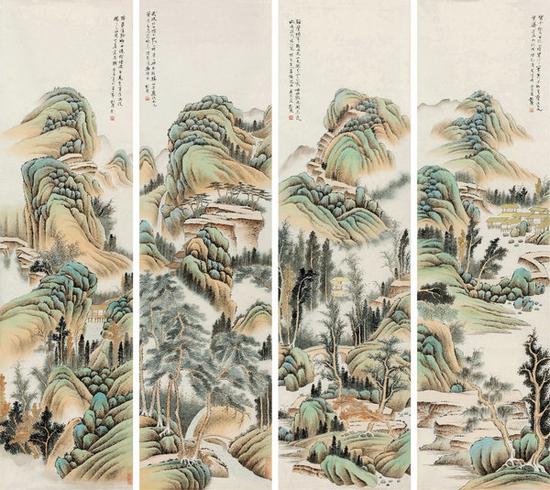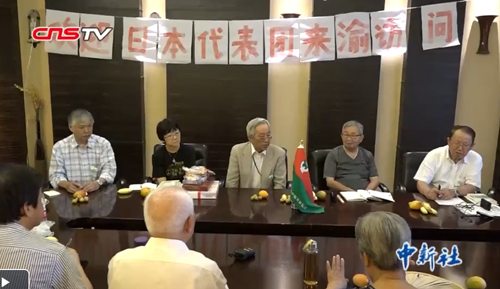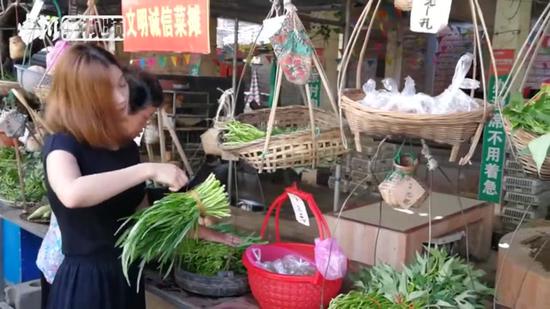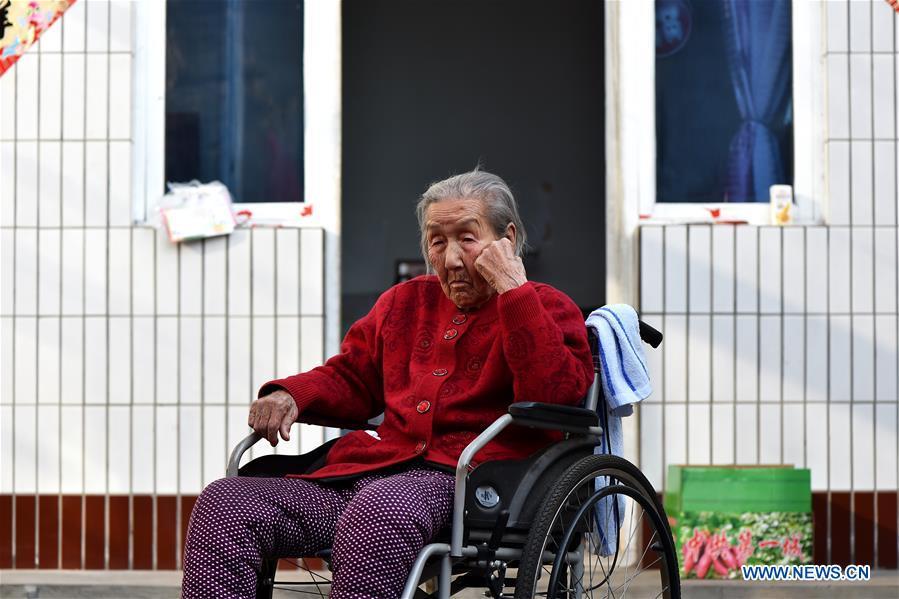
Cao Heimao is seen at a courtyard on March 13, 2018. Cao died at the age of 96 in Qidong Village of Yuxian County, north China's Shanxi Province, July 24, 2018. In the autumn of 1941, Cao was captured by Japanese invaders and became a "comfort woman". Two years later, she fled and returned home. Women forced into sexual slavery by the Imperial Japanese Army before and during World War II were called "comfort women." Research shows some 400,000 women in Asia were forced to be "comfort women" for the Japanese army during World War II, nearly half of whom were Chinese. However, the Japanese government has refused to acknowledge legal responsibility for the "comfort women" issue so far. Reporters from Xinhua spent many years to look for the victims and recorded their current lives. (Xinhua/Zhan Yan)
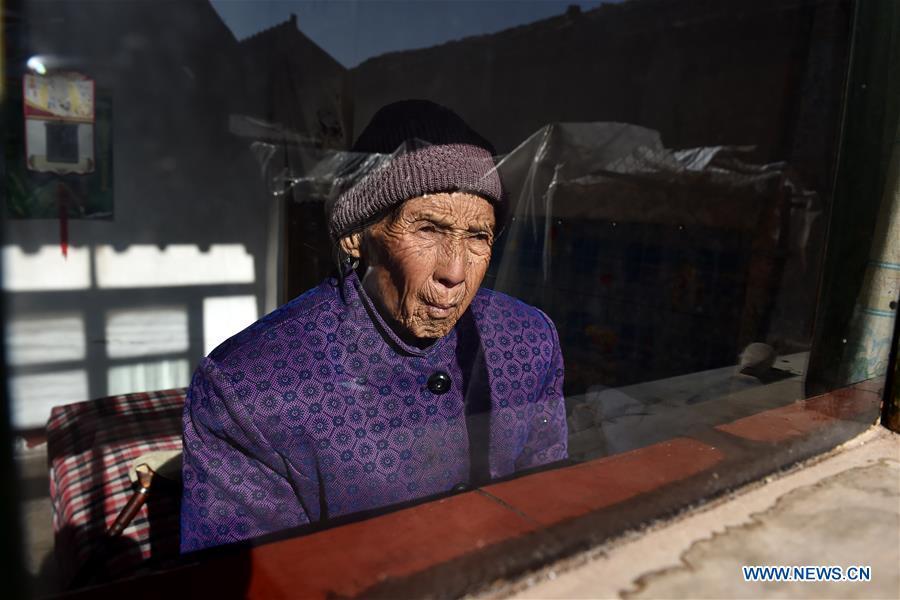
Ren Lan'e is seen at home at Gucheng Village of Wuxiang County, north China's Shanxi Province, March 10, 2016. Ren died on July 1, 2016 at the age of 85. In August of 1944, Ren was raped by Japanese invaders at her home and taken to a gun turret. About one month later, she was rescued by her brother. Women forced into sexual slavery by the Imperial Japanese Army before and during World War II were called "comfort women." Research shows some 400,000 women in Asia were forced to be "comfort women" for the Japanese army during World War II, nearly half of whom were Chinese. However, the Japanese government has refused to acknowledge legal responsibility for the "comfort women" issue so far. Reporters from Xinhua spent many years to look for the victims and recorded their current lives. (Xinhua/Zhan Yan)
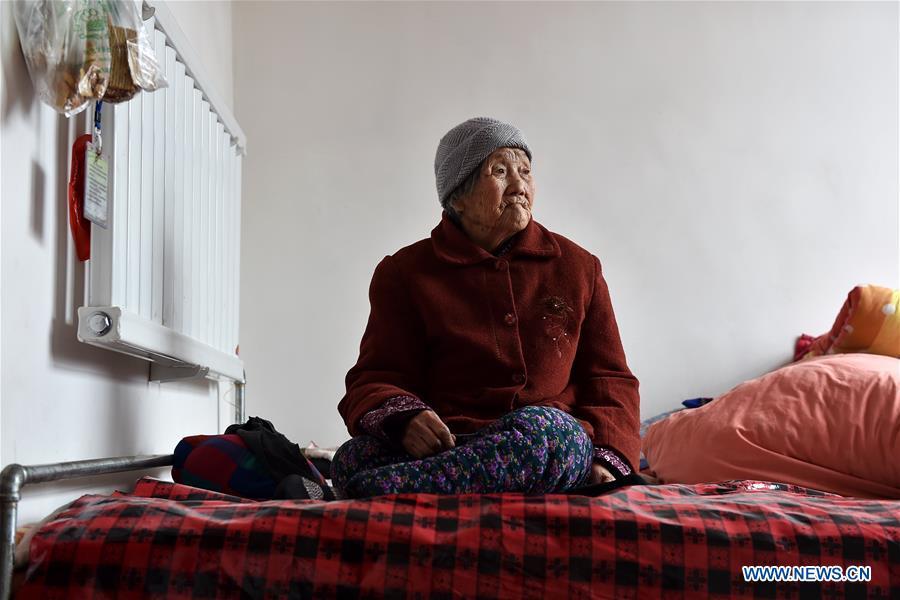
Zhao Lanying sits on the bed on March 9, 2016. Zhao died at the age of 93 in Xinyi Village of Wuxiang County, north China's Shanxi Province, April 7, 2016. In June of 1941, Zhao and two sisters were captured by Japanese invaders. About two months later, her family took her home. Zhao spent three month to recover from physical injury but remained emotionally-wounded for her lifetime. Women forced into sexual slavery by the Imperial Japanese Army before and during World War II were called "comfort women." Research shows some 400,000 women in Asia were forced to be "comfort women" for the Japanese army during World War II, nearly half of whom were Chinese. However, the Japanese government has refused to acknowledge legal responsibility for the "comfort women" issue so far. Reporters from Xinhua spent many years to look for the victims and recorded their current lives. (Xinhua/Zhan Yan)
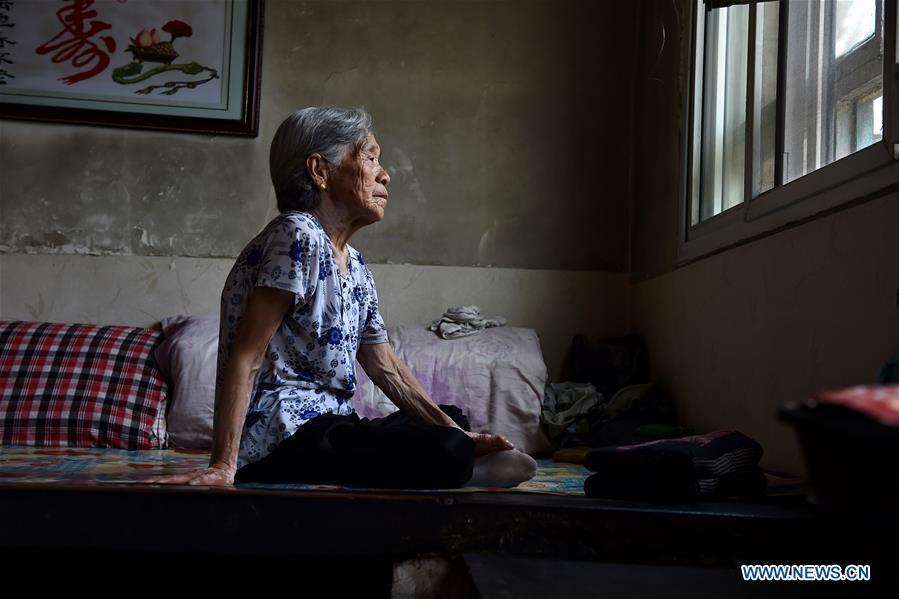
Liu Fenghai sits on the bed on Aug. 3, 2016. Liu died at the age of 90 in Nanyuan Village of Qinxian County, north China's Shanxi Province, Jan. 20, 2017. In the spring of 1943, Liu Fenghai and villager Liu Yuegui were captured and being raped by Japanese invaders. They were thrown into a valley several days later. Liu Fenghai never received the apology she longed for in her lifetime. Women forced into sexual slavery by the Imperial Japanese Army before and during World War II were called "comfort women." Research shows some 400,000 women in Asia were forced to be "comfort women" for the Japanese army during World War II, nearly half of whom were Chinese. However, the Japanese government has refused to acknowledge legal responsibility for the "comfort women" issue so far. Reporters from Xinhua spent many years to look for the victims and recorded their current lives. (Xinhua/Zhan Yan)
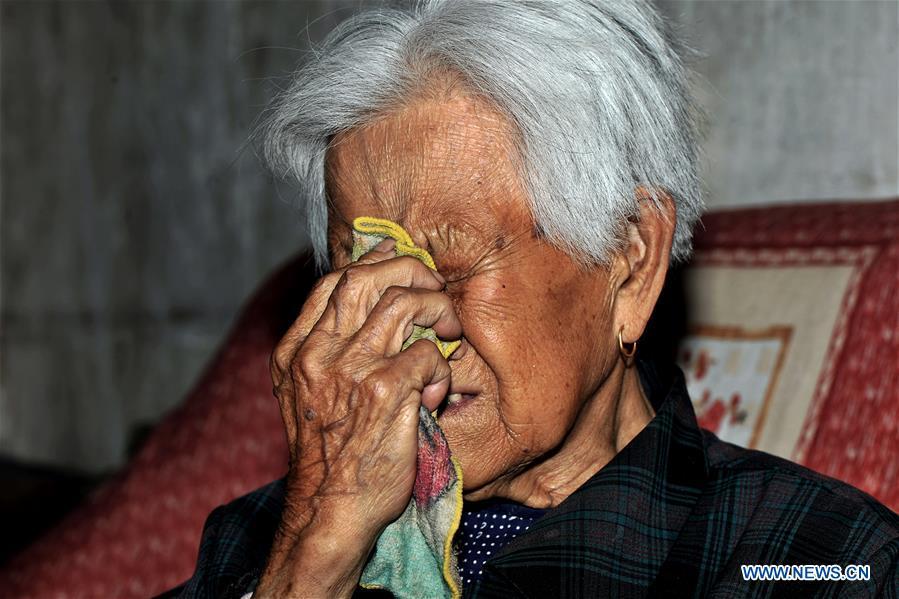
97-year-old Liu Gailian sheds tears as she speaks out her experiences as a "comfort woman" in Yangqu County, north China's Shanxi Province, Aug. 2, 2016. In December of 1943, Liu was captured and abused by the Japanese army before she was redeemed by her family. Women forced into sexual slavery by the Imperial Japanese Army before and during World War II were called "comfort women." Research shows some 400,000 women in Asia were forced to be "comfort women" for the Japanese army during World War II, nearly half of whom were Chinese. However, the Japanese government has refused to acknowledge legal responsibility for the "comfort women" issue so far. Reporters from Xinhua spent many years to look for the victims and recorded their current lives. (Xinhua/Zhan Yan)
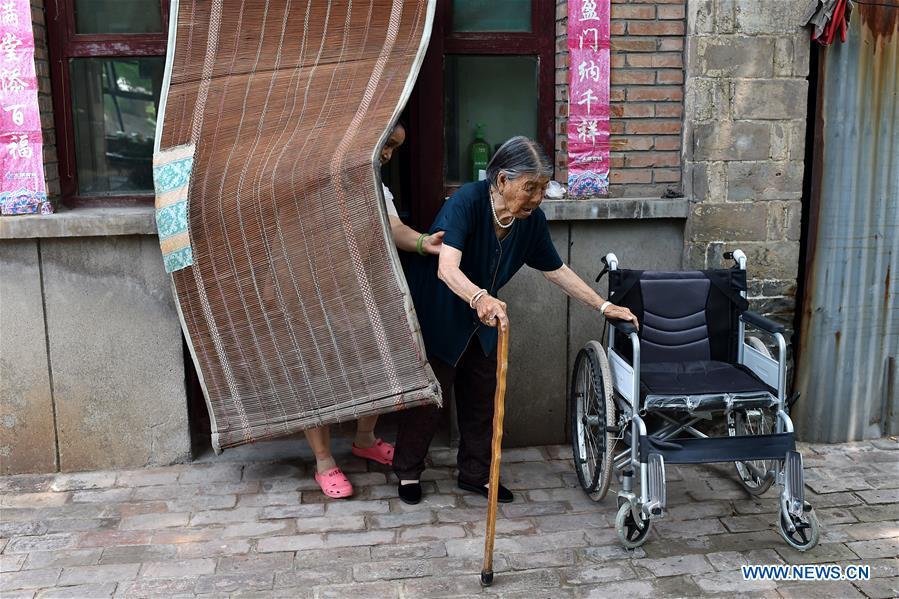
90-year-old Hao Yuelian (R) walks to a courtyard with the assistance of her daughter in Yanggongling Village of Wuxiang County, north China's Shanxi Province, July 24, 2018. In June of 1943, Hao was abducted by Japanese invaders. One month later, her family redeemed her from the Japanese army. After that, she was captured again and rescued by her father and brother. Women forced into sexual slavery by the Imperial Japanese Army before and during World War II were called "comfort women." Research shows some 400,000 women in Asia were forced to be "comfort women" for the Japanese army during World War II, nearly half of whom were Chinese. However, the Japanese government has refused to acknowledge legal responsibility for the "comfort women" issue so far. Reporters from Xinhua spent many years to look for the victims and recorded their current lives. (Xinhua/Zhan Yan)
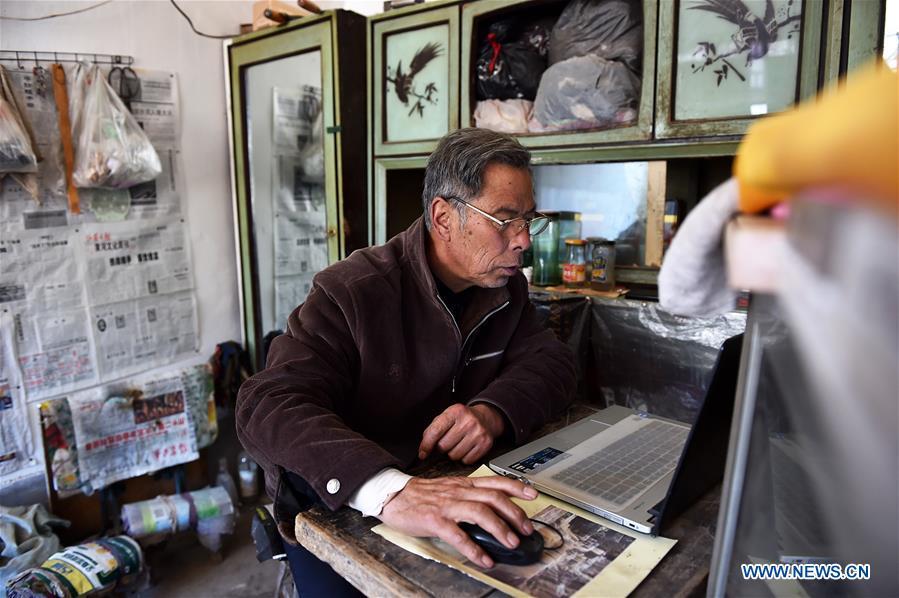
Zhang Shuangbing looks at the screen of his laptop on March 2, 2016. For more than 10 years Zhang Shuangbing, a retired Chinese village teacher, painstakingly recorded the heart-wrenching experiences of 129 Chinese women who were forced into sexual slavery by Japanese invaders during World War II. Women forced into sexual slavery by the Imperial Japanese Army before and during World War II were called "comfort women." Research shows some 400,000 women in Asia were forced to be "comfort women" for the Japanese army during World War II, nearly half of whom were Chinese. However, the Japanese government has refused to acknowledge legal responsibility for the "comfort women" issue so far. Reporters from Xinhua spent many years to look for the victims and recorded their current lives. (Xinhua/Zhan Yan)
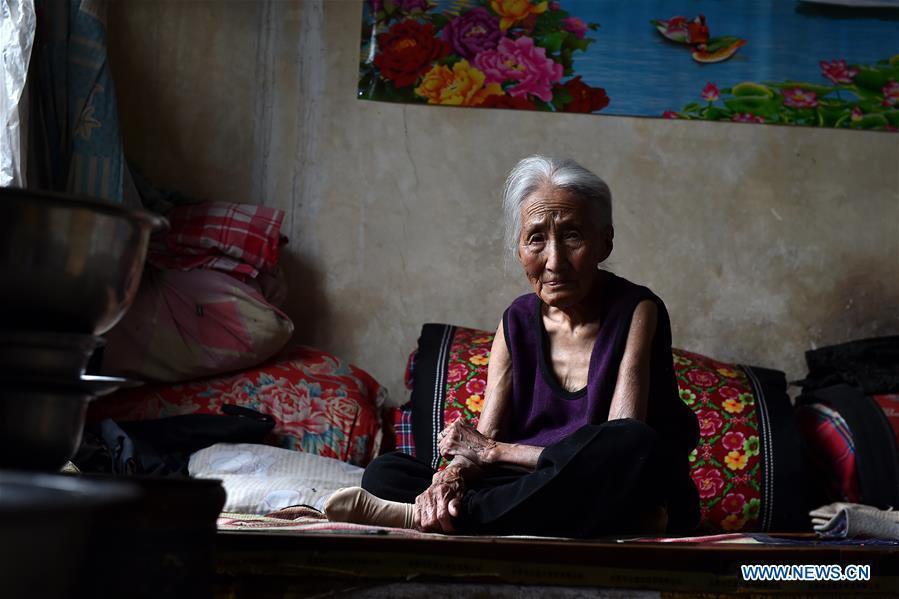
Hao Juxiang is seen at home in Quandian Village of Wuxiang County, north China's Shanxi Province, Aug. 3, 2016. Hao died on Aug. 16, 2016 at the age of 94. In April of 1939, Hao was captured by Japanese invaders and became a "comfort woman". About one month later, she was redeemed by her family. Women forced into sexual slavery by the Imperial Japanese Army before and during World War II were called "comfort women." Research shows some 400,000 women in Asia were forced to be "comfort women" for the Japanese army during World War II, nearly half of whom were Chinese. However, the Japanese government has refused to acknowledge legal responsibility for the "comfort women" issue so far. Reporters from Xinhua spent many years to look for the victims and recorded their current lives. (Xinhua/Zhan Yan)
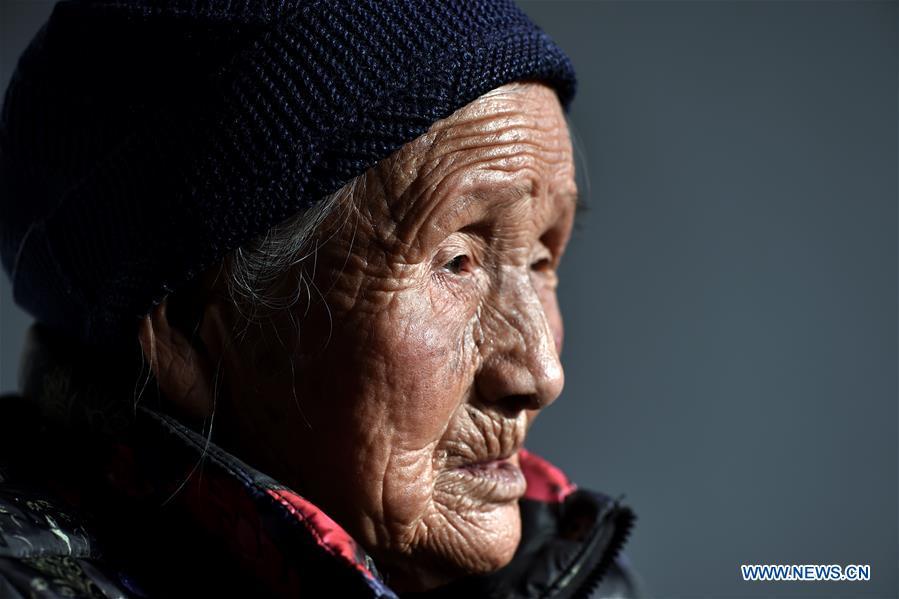
90-year-old Pian Huanying is seen at home in Nuanquan Village of Qinxian County, north China's Shanxi Province, March 19, 2018. In the autumn of 1942, Pian has been abducted and abused by Japanese invaders. She was rescued by her relatives about 20 days later. After that, she was captured for three times. Women forced into sexual slavery by the Imperial Japanese Army before and during World War II were called "comfort women." Research shows some 400,000 women in Asia were forced to be "comfort women" for the Japanese army during World War II, nearly half of whom were Chinese. However, the Japanese government has refused to acknowledge legal responsibility for the "comfort women" issue so far. Reporters from Xinhua spent many years to look for the victims and recorded their current lives. (Xinhua/Zhan Yan)
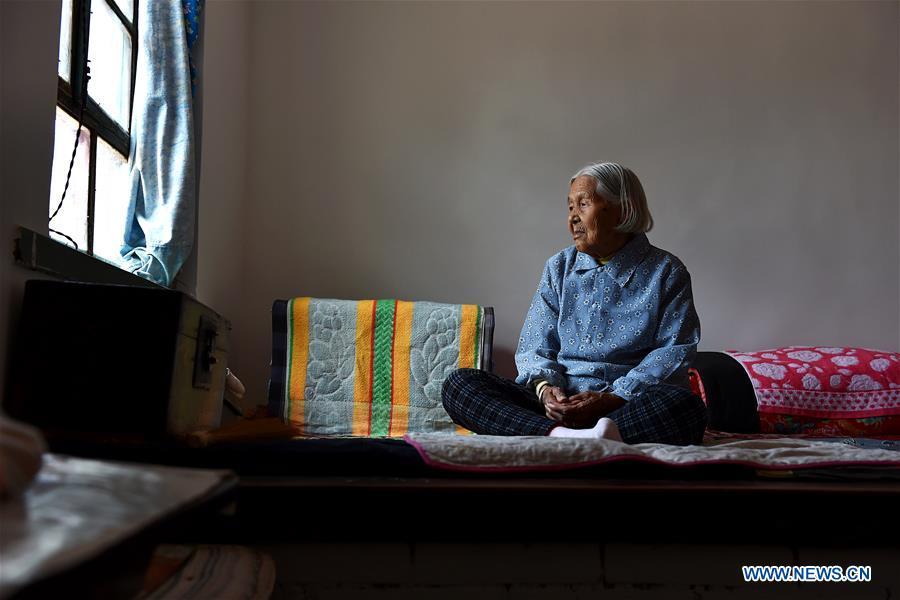
Li Ailian sits on the bed in Shaoqu Village of Wuxiang County, north China's Shanxi Province, Aug. 3, 2016. Li died on Jan. 23, 2018 at the age of 90. In the summer of 1945, Li was abducted and abused regularly by Japanese invaders for over 50 days. Women forced into sexual slavery by the Imperial Japanese Army before and during World War II were called "comfort women." Research shows some 400,000 women in Asia were forced to be "comfort women" for the Japanese army during World War II, nearly half of whom were Chinese. However, the Japanese government has refused to acknowledge legal responsibility for the "comfort women" issue so far. Reporters from Xinhua spent many years to look for the victims and recorded their current lives. (Xinhua/Zhan Yan)











